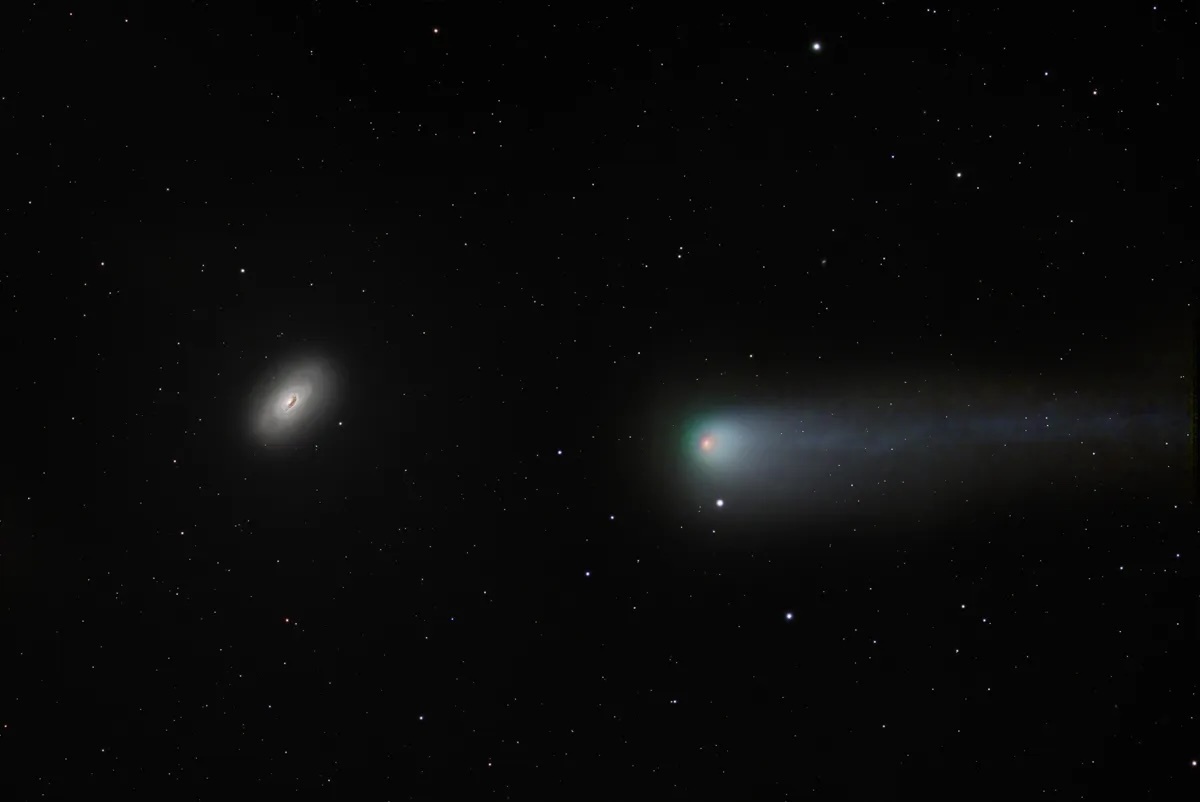2.09.2024
"I had only 1 night to grab this shot, and only about 1 hour to do it."

Comet 13P/Olbers (right) and the Black Eye Galaxy (M64) on the left. (Image credit: Greg Meyer)
In a race against the clock, before the entire scene set below the horizon, astrophotographer Greg Meyer managed to capture this incredible image of Comet 13P/Olbers zipping through space alongside The Black Eye Galaxy (M64).
"I had only 1 night to grab this shot, and only about 1 hour to do it. It was sinking fast below the horizon after sunset," Meyer told Space.com in an email.
On Aug. 25, Meyer was running his telescope remotely, having placed it at the Starfront Observatory located near Brady, Texas, just six weeks prior. The entire experience was quite new for Meyer. "I was quickly making changes on the fly in N.I.N.A. to frame it and rapidly grab sequential RGB using my mono camera," Meyer said. His quick thinking paid off and due to the dark skies at the Starfront Observatory, Meyer tracked down the comet to just 12 degrees above the horizon.
Comet 13P/Olbers is currently hurtling through the depths of our solar systemand is still visible within a pair of binoculars with a 40-50mm aperture or a small telescope, but hurry as it won't be around for much longer. It made its closest approach to Earth on July 20 when it came within 176 million miles (283 million kilometers) of our planet. Its next close approach isn't until 2094.
The comet is named after German astronomer Heinrich Olbers, who discovered it in 1815. The "P" in its name stands for "Periodic," a label assigned to comets with orbits shorter than 200 years. The number 13 indicates that it was the 13th comet to be classified as periodic.
Comet 13P/Olbers isn't the only impressive target in this photo.
Around 17 million light-years away in the constellation Coma Berenices (Berenice's Hair) is a spiral galaxy, known as Messier 64, or the Black Eye Galaxy. Meyer caught this galactic scene alongside Comet 13P/Olbers on the night of Aug. 25.
In the image you can make out the dark band of dust that sweeps across one side of the nucleus, giving the Black Eye Galaxy its name.
The galaxy has a strange internal motion whereby the gas in the outer regions rotates in the opposite direction from the gas and stars in the inner regions. The bizarre behavior is thought to be the result of a merger between M64 and another galaxy over a billion years ago.
ou can see more of Meyer's impressive astrophotos via his astrobin account.
Never miss a night sky sight again with our night sky tonight page and monthly skywatching calendar.
If you're feeling inspired and want to set your sights on photographing the night sky our astrophotography for beginners and best cameras for astrophotographyguides may help. Should you want a more detailed view of the night sky we have also rounded up some of the best telescopes for deep space.
Quelle: SC
